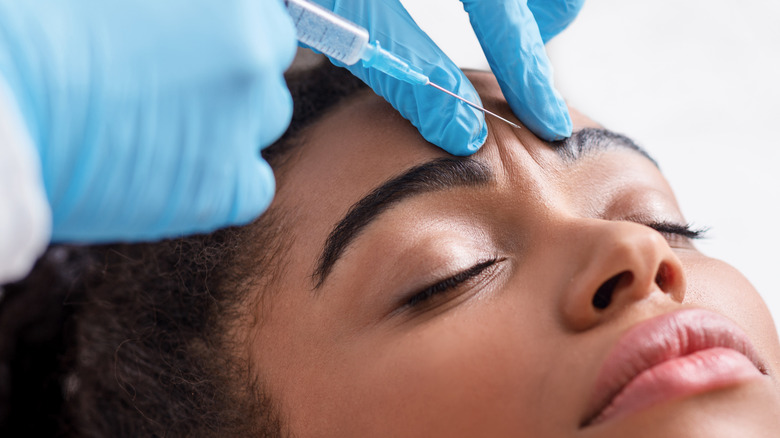What To Expect When Getting Botox Injections
Botox is a popular cosmetic procedure, but it's often shrouded in uncertainty and fear. While you may expect to spend some dough and get stuck with a needle or two, there's more to consider when deciding whether Botox injections are right for you. If you do decide to try it, here's what you can expect when getting Botox.
Botox is most well-known for its ability to smooth out wrinkles and reduce the appearance of aging (via WebMD). However, it's also used for medical purposes, such as severe sweating, neck and shoulder spasms, chronic migraine, overactive bladder, and more. It works by injecting a toxin made from the bacterium Clostridium botulinum, which impedes signals from the nerves to the muscles, making muscles relax and wrinkles soften. The full effect is seen after 7-14 days and will last from 3-6 months, which is when treatment is needed again. However, as the muscles shrink over time, wrinkles will become less severe.
What you should know before getting Botox
To start, you should choose a certified doctor who has experience with Botox injections and can help advise you on what's best for your health (via Mayo Clinic). Make sure you let them know if you take muscle relaxants, sleeping aids, allergy medications, or blood thinners. You shouldn't get Botox if you're pregnant, nursing, or have a neurological disease (via WebMD).
During the actual procedure, you may only feel slight discomfort, depending on where the Botox is being injected (via Mayo Clinic). Those using it to treat severe sweating in the hands and feet may experience more pain than those getting injections in the forehead. Topical anesthesia can always be used if this is a concern. The number of injections you receive will depend on the extent of your treatment.
Side effects may include some bruising, a headache, or numbness, but these are temporary (via WebMD). You should avoid rubbing the area after the treatment, as that may cause the Botox to spread to other areas. You may also need to stay upright for a few hours following the treatment and avoid exercising for a day or so.


